SANSAD TV| Special: Biofuels in India’s Energy Security
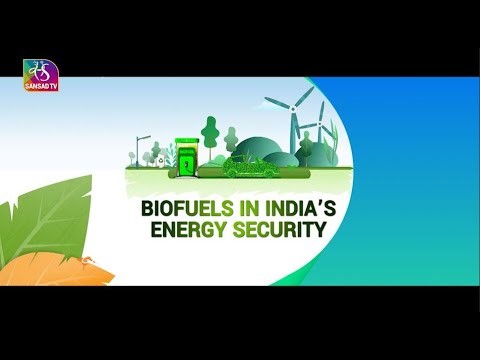
Disclaimer: Copyright infringement not intended.
Context
- The Union government has signed off on a plan to procure maize at federally fixed minimum support prices while increasing output and productivity by expanding the area under cultivation as part of a strategy to meet India’s biofuel needs.
Details:
- Biofuels could have a significant impact in five key areas – lowering GHG emissions as they could result in up to 80% reduction in well-to-wheel emissions as compared to their fossil fuel counterparts; reducing import dependency and thereby boosting energy security; enabling circularity by employing waste for wealth creation and delivering wider socioeconomic benefits.
- In addition to their energy potential, they also offer downstream applications in the form of bio-based chemicals and polymers.
- Biofuels are especially critical in decarbonizing long-haul transport sectors such as aviation and maritime.
- Sustainable Aviation Fuel (SAF) blends are already technically compatible with fuel delivery and airport fueling infrastructure.
INTRODUCTION:
- India has taken significant strides in the energy sector. It has accelerated its transition to cleaner energy sources to inch closer to its sustainable development goals. It is fast cutting its reliance on fossil fuels not only to combat climate change but also to achieve energy security, achieve self-reliance and gain benefits on socio-economic fronts. In its efforts towards developing alternative, clean, and green fuels, it has increased focus on producing biofuels to meet its current and future needs.
|
As per a recent report by the International Energy Agency, the country is projected to add the largest percentage increase in coal use globally, ahead of China and the European Union. Its coal use is expected to increase by 7% or about 70 million tonnes (Mt).
The country still largely depends on fossil fuels, close to 50% of which is still imported. This is further expected to increase to 53% by 2030. With depleting resources, climate change, rising fuel prices and power demand, the country needs to shift gears and integrate cleaner alternatives like biofuel for a sustained growth.
|
Biofuels for 3Es: Environment, economy, and empowerment
- A recent study by the International Energy Agency says that India’s annual import bill for fossil fuels is projected to triple by 2040 because the country is set to experience the largest energy demand increase in the world over the next two decades.
- Rising consumption of fossil fuels is a reason for increasing stress on the Indian economy and thus it makes it urgent to look for sustainable alternatives.
- Going for biofuels can massively benefit the Indian exchequer and lower its dependence on oil producing countries for imports which is currently an obstacle for India to achieve energy security and economic prosperity.
Biofuels can be produced from a variety of feedstocks, including:
- Energy crops: These are crops grown specifically for biofuel production, such as corn, sugarcane, and switchgrass.
- Forest residues: These are leftover materials from forestry operations, such as wood chips, sawdust, and bark.
- Municipal solid waste: This includes food scraps, yard waste, and paper products.
- Wastewater treatment plant sludge: This is the solid material that settles out of wastewater during treatment.
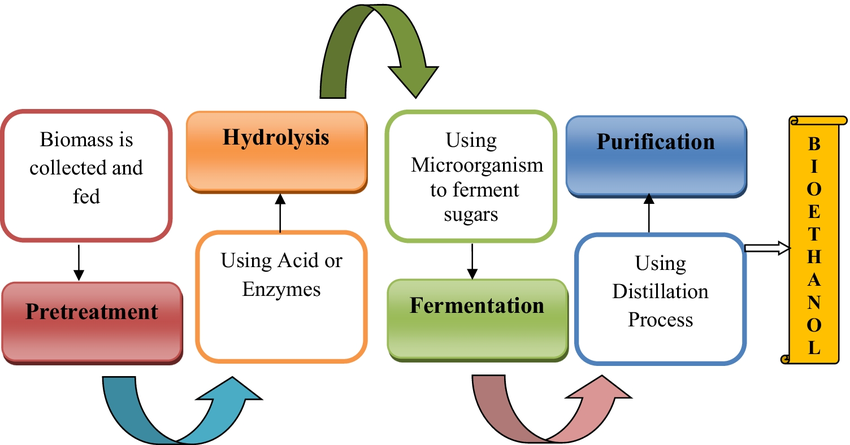
There are two main types of biofuels:
- Bioethanol: A liquid fuel that is produced by fermenting sugars derived from crops such as corn or sugarcane. It can be blended with gasoline to power vehicles.
- Biodiesel: A liquid fuel that is produced from vegetable oils, animal fats, or used cooking oil. It can be used in place of diesel fuel in vehicles.
Biofuels have a number of potential benefits, including:
- Reduced reliance on fossil fuels: Biofuels can help to reduce our dependence on imported oil, which can improve energy security and reduce greenhouse gas emissions.
- Renewable resource: Biomass is a renewable resource that can be replenished over time.
- Improved air quality: Biofuels can burn cleaner than fossil fuels, which can improve air quality.
- Economic development: The biofuel industry can create jobs in rural areas.
Significance of Biofuels in Reducing Petroleum Dependence:
- Availability and Renewability: Biofuels are produced from biomass, making them renewable and sourced from a wide range of materials.
- Environmental Impact: Biofuels release fewer carbon emissions than fossil fuels, with the added benefit of managing municipal solid waste through conversion into fuel.
- Security: The local production of biofuels reduces dependence on foreign energy sources, enhancing national energy security.
- Economic Stimulation: Local biofuel manufacturing plants can create jobs, especially in rural areas, contributing to economic growth.
Recent Initiatives to Promote Biofuels in India:
- Department of Biotechnology Initiatives: Development of 2G Ethanol, indigenous cellulolytic enzyme, and micro algae-based sewage treatment.
- Pradhan Mantri JI-VAN Yojana: A scheme to create an ecosystem for commercial projects and boost R&D in 2G Ethanol.
- Ethanol Blending Policy: Aimed at achieving 20% ethanol-blending and 5% biodiesel-blending by 2025-26.
- GOBAR DHAN Scheme: Focusing on managing cattle dung and farm waste for compost, biogas, and bio-CNG.
- Repurpose Used Cooking Oil (RUCO): An initiative for the collection and conversion of used cooking oil to biodiesel.
Challenges:
Feedstock and Sustainability:
- Land-use Change: Large-scale biofuel production can lead to deforestation and conversion of agricultural land for energy crops. This disrupts ecosystems and biodiversity.
- Food Security Concerns: Diverting food crops for biofuel production can drive up food prices and threaten food security, especially for vulnerable populations.
- Water Consumption: Biofuel production can be water-intensive, putting a strain on water resources, particularly in arid regions.
Environmental Impact:
- Indirect Land-Use Change (ILUC): Increased demand for biofuel feedstock can trigger production in new areas, potentially leading to deforestation even beyond the land directly used for biofuels.
- Greenhouse Gas Emissions: While biofuels emit less carbon dioxide during combustion compared to fossil fuels, the entire production process (including land-use change and fertilizer use) might still contribute to greenhouse gas emissions.
Economic and Technological Hurdles:
- Cost Competitiveness: Currently, producing biofuels is often more expensive than extracting fossil fuels. Technological advancements and economies of scale are needed to bring down costs.
- Infrastructure Requirements: Dedicated infrastructure for biofuel production, transportation, and blending with conventional fuels requires significant investment.
- Second-Generation Biofuels: Advanced biofuels derived from non-food sources like algae or waste materials are promising, but these technologies are still under development and require further research and innovation.
Social and Political Considerations:
- Livelihood Impacts: A shift towards biofuels might affect the livelihoods of farmers traditionally focused on food production.
- Sustainability Standards and Regulations: Robust sustainability standards and regulations are crucial to ensure biofuel production is truly environmentally and socially responsible.
- International Cooperation: Global collaboration is essential for knowledge sharing, technology transfer, and developing best practices for sustainable biofuel production.
The Way Forward:
- Focus on Sustainable Feedstock: Utilizing non-food crops, agricultural residues, and waste materials can minimize land-use change and food security concerns.
- Advanced Biofuel Technologies: Investing in research and development of second-generation biofuels can unlock their potential for a more sustainable future.
- Policy and Incentives: Government policies and incentives can promote sustainable biofuel practices, attract investments, and encourage wider adoption.
- Life Cycle Assessments: Conducting thorough life cycle assessments to understand the environmental impact of biofuels throughout their production process is essential.
- Public Awareness: Raising public awareness about the potential of biofuels and the importance of sustainability in their production is crucial for broader societal acceptance.
Conclusion:
- By overcoming these challenges and adopting a holistic approach, biofuels can evolve into a powerful tool for achieving energy security, reducing greenhouse gas emissions, and fostering a more sustainable future.
ALSO VISIT: https://www.iasgyan.in/daily-current-affairs/biofuels
AIR SPOTLIGHT| Union Cabinet Decision Promoting Development of Semiconductor & Display Manufacturing Ecosystem in India

Context:
- The Union Cabinet chaired by Prime Minister Shri Narendra Modi approved the establishment of three semiconductor units under ‘Development of Semiconductors and Display Manufacturing Ecosystems in India.
Key Details:
- The Programme for Development of Semiconductors and Display Manufacturing Ecosystem in India was notified on 21.12.2021 with a total outlay of Rs. 76,000 crore.
- In June, 2023, the Union Cabinet had approved the proposal of Micron for setting up a semiconductor unit in Sanand, Gujarat.
About Union Cabinet Decision on Semiconductor & Display Manufacturing in India:
| In December 2021, the Union Cabinet of India approved a comprehensive program for the development of a sustainable Semiconductor and Display Manufacturing Ecosystem in the country. This program aims to position India as a global hub for electronic system design and manufacturing. |
Objectives
- Reduce Reliance on Imports: India currently relies heavily on imported semiconductors and display panels, used in various electronic devices. This program aims to boost domestic production and reduce dependence on foreign sources.
- Boost Job Creation: The development of a domestic semiconductor and display industry has the potential to create a significant number of high-skilled jobs in areas like design, manufacturing, and research & development.
- Attract Investments: The program incentivizes investments in semiconductor and display fabrication units, attracting global players and fostering technological advancements within India.
Key Initiatives:
- Financial Incentives: The government offers financial support in the form of land acquisition assistance, capital subsidies, and tax benefits to companies setting up semiconductor and display fabrication units in India.
- Setting Up Semiconductor Fab Units: The program prioritizes establishing multiple semiconductor fabrication units (fabs) across India to manufacture chips for various applications.
- Developing Research Infrastructure: Investments are planned to create research and development facilities to support innovation and design capabilities in the domestic semiconductor industry.
- Skilling Workforce: The program emphasizes skilling initiatives to develop a talent pool of engineers, technicians, and other professionals required for the semiconductor and display industry.
Recent Development:
|
Micron's Investment: Micron Technology, a leading US-based semiconductor company, received approval for setting up a fab unit in Gujarat. This signifies progress in attracting major players to India's semiconductor ecosystem.
Three New Units Sanctioned: In June 2023, the Union Cabinet approved the establishment of three new semiconductor units under the program, with a cumulative investment of ₹1.26 lakh crore.
|

Expected Benefits:
- Strengthened Electronics Industry: A robust domestic semiconductor and display industry can significantly strengthen India's electronics manufacturing sector, potentially leading to the production of more affordable and advanced electronic devices within the country.
- Strategic Advantage: Reduced dependence on foreign chipmakers can give India a strategic advantage in various sectors like defense, telecommunications, and artificial intelligence.
- Technological Advancement: The program can foster a culture of innovation and research & development in the field of semiconductor technology within India.
Challenges and Considerations:
Financial Hurdles:
- High Capital Costs:Setting up semiconductor fabrication units (fabs) requires massive investments in infrastructure, equipment, and research & development. India will need to create attractive financial packages to incentivize companies, especially considering the global competition.
- Long Gestation Periods:Semiconductor manufacturing facilities take years to become operational and reach profitability. Sustaining investor interest and managing cash flow during this extended period can be challenging.
Technological Constraints:
- Rapid Technological Advancements: The semiconductor industry is characterized by rapid technological evolution. India needs to bridge the gap with established players and invest in continuous innovation to stay competitive.
- Supply Chain Dependencies:Semiconductor manufacturing relies on a complex global supply chain for raw materials, equipment, and specialized components. Disruptions in this chain can significantly impact production.
Human Capital Challenges:
- Skilled Workforce Shortage:The industry requires a highly skilled workforce with expertise in design, fabrication, and testing. Developing this talent pool through robust skilling initiatives is crucial.
- Brain Drain:Competition for top talent in the global semiconductor market is fierce. India needs to create an attractive work environment and career progression opportunities to retain skilled professionals.
Policy and Regulatory Concerns:
- Ease of Doing Business:Streamlining bureaucratic procedures, expediting land acquisition, and establishing clear regulations are essential to attract investments and create a business-friendly environment.
- Intellectual Property (IP) Protection:A robust IP framework will safeguard innovation and encourage companies to invest in research & development within India.
Geopolitical Considerations:
- Global Trade Tensions: The ongoing trade war between the US and China can impact the flow of technology and raw materials for semiconductor manufacturing.
- Supply Chain Security:India needs to build a resilient supply chain to minimize dependence on any single country and ensure a reliable flow of critical components.
The Way Forward:
- Collaboration is Key: Partnerships between domestic and international companies, along with collaboration between government, academia, and industry, are crucial for knowledge transfer and technological advancements.
- Focus on Innovation: Investing in research & development and fostering a culture of innovation will allow India to develop indigenous chip design capabilities and reduce reliance on foreign technology.
- Building a Strong Ecosystem: Developing a robust ecosystem that includes supporting industries like chip packaging, testing, and design will strengthen India's overall position in the semiconductor market.
Closing thoughts:
- The Union Cabinet's decision to promote semiconductor and display manufacturing holds immense potential for India's technological and economic development. By addressing the challenges, India can leverage this program to establish a robust domestic electronics ecosystem, reduce import dependence, and create a skilled workforce for the future.
India’s first indigenous Prototype Fast Breeder Reactor
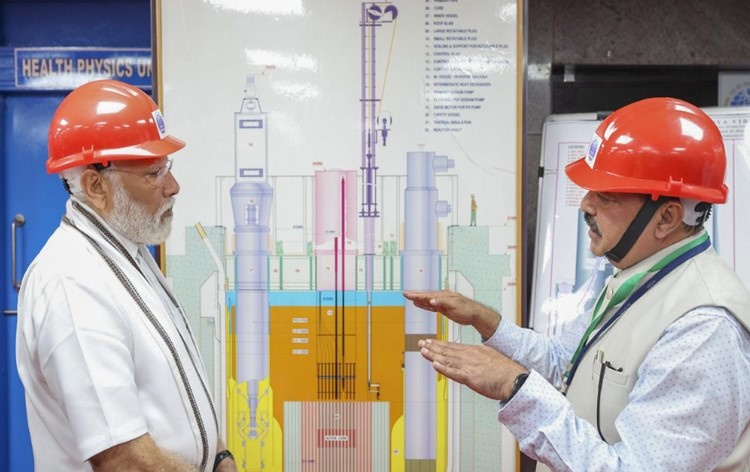
Context
- In a historic milestone marking entry into the vital second stage of India’s three-stage nuclear program, Prime Minister Narendra Modi witnessed today, the commencement of “Core Loading” at India’s first indigenous Prototype Fast Breeder Reactor (PFBR) (500 MWe) at Kalpakkam, Tamil Nadu.
Key Details:
- In line with the true spirit of Aatmanirbhar Bharat, PFBR has been fully designed and constructed indigenously by BHAVINI with significant contributions from more than 200 Indian industries including MSMEs. Once commissioned, India will only be the second country after Russia to have a commercially operating Fast Breeder Reactor.
| The PFBR reactor core consists of control sub-assemblies, blanket subassemblies, and fuel sub-assemblies. With minimized nuclear waste generated from the reactor and advanced safety features, FBRs will provide a safe, efficient, and clean source of energy and contribute to the goal of net zero. |
About Prototype Fast Breeder Reactor (PFBR):
- A 500 MWe fast breeder reactor under construction at Kokilamedu, near Kalpakkam, Tamil Nadu, India.
- Designed by the Indira Gandhi Centre for Atomic Research (IGCAR).
- Considered a next-generation nuclear reactor due to its breeding capabilities.
How it Works (Fast Breeder Technology):
- Unlike conventional reactors that use uranium-235 (U-235) for fission, fast breeder reactors utilize a different fuel cycle.
- They use plutonium-239 (Pu-239) as the primary fissile material, which is more efficient in producing energy.
- Importantly, they also can "breed" new fissile material during operation.
- This breeding process involves converting fertile uranium-238 (U-238) into Pu-239, partially offsetting fuel consumption and potentially extending the life cycle of nuclear fuel resources.
Country's 1st Green Hydrogen Plant in Stainless Steel Sector at Hisar, Haryana
Context
- Union Steel Minister Jyotiraditya Scindia today virtually inaugurated India's 1st Green Hydrogen Plant in the Stainless Steel Sector at Jindal Stainless Limited, Hisar.
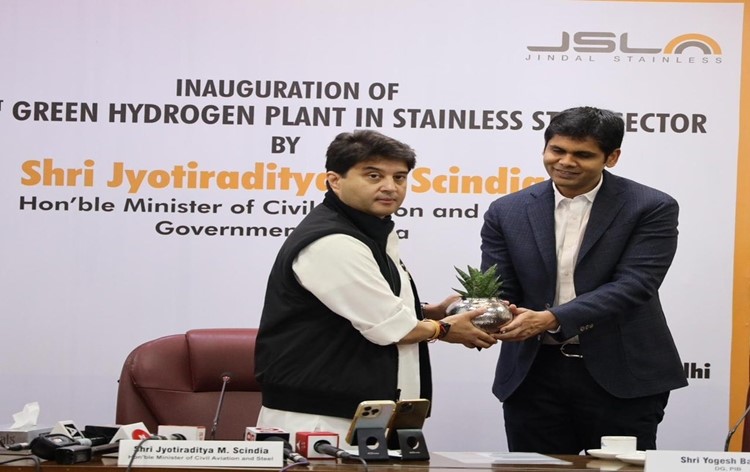
Disclaimer: Copyright infringement is not intended
Details:
- This plant will be the world’s first off-grid Green Hydrogen plant for the stainless steel industry and the world’s first Green Hydrogen plant with rooftop and floating solar.
- This project will reduce carbon emissions by around two thousand 700 Metric Tonnes per annum and 54 thousand tons of carbon dioxide emissions over the next two decades.
About Green Hydrogen Plant:
|
About
|
- Green hydrogen plants are facilities dedicated to producing hydrogen (H2) through electrolysis, a process that splits water (H2O) into its constituent elements – hydrogen and oxygen – using renewable energy sources like solar or wind power. This green hydrogen is gaining traction as a clean and versatile fuel source for various applications.
|
|
How it Works
|
- Electrolysis: An electrolyzer, the core component of a green hydrogen plant, uses electricity to separate water molecules. When electricity passes through the water, the hydrogen and oxygen atoms break their bonds and are released as separate gases.
- Renewable Energy Source: Green hydrogen plants are powered by renewable energy sources like solar or wind farms. This ensures the production process is sustainable and doesn't contribute to greenhouse gas emissions.
|
IMD forecast a fresh spell of rain and snowfall over the Western Himalayan region
Context
- India Meteorological Department (IMD) has forecast a fresh spell of rainfall and snowfall over the Western Himalayan region from tomorrow till Thursday.
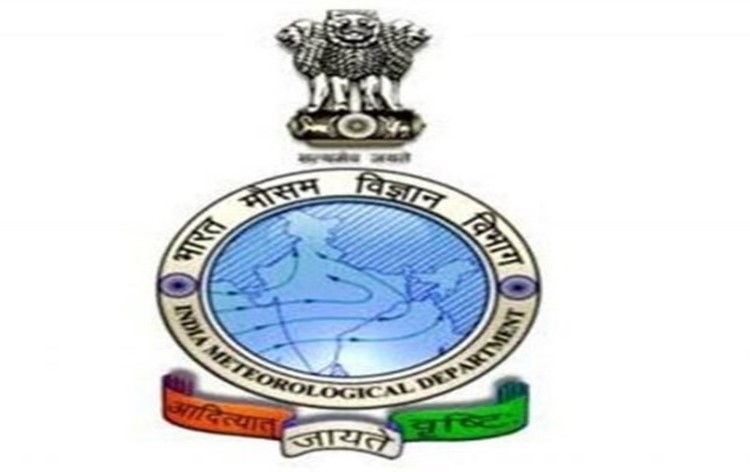
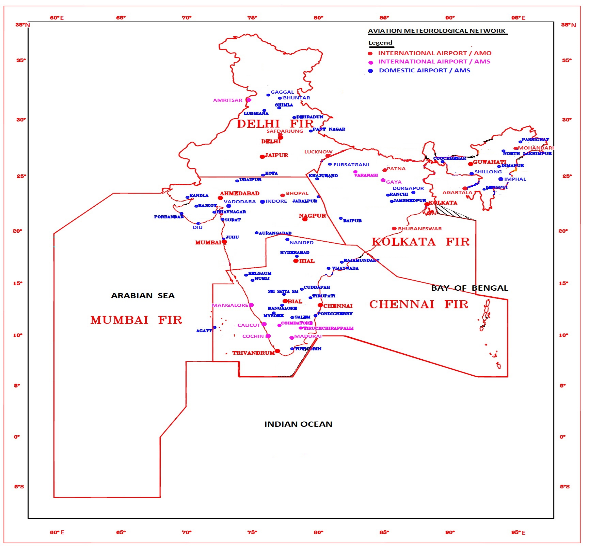
Details
- Light to moderate rainfall is likely over Jammu Kashmir, Ladakh, Gilgit, Muzaffarabad, Himachal Pradesh, and Uttarakhand. IMD said a fresh Western Disturbance is likely to affect the Western Himalayan Region from tomorrow.
- The weather office also forecast scattered to fairly widespread light rainfall over Arunachal Pradesh during the next three days.
| The India Meteorological Department (IMD) is an important agency of the Ministry of Earth Sciences of the Government of India. It is responsible for a variety of meteorological services across India, including weather forecasting, climatology, and seismology. The IMD was founded in 1875, making it one of the oldest weather services in the world. |
Key functions of the IMD:
- Weather forecasting: The IMD provides weather forecasts for different time scales, ranging from short-term forecasts for the next few hours to long-term forecasts for the next few seasons.
- Climatology: The IMD collects and analyzes data on long-term climate patterns in India. This data is used to assess the impact of climate change and to develop strategies for adaptation.
- Seismology: The IMD operates a network of seismological observatories that monitor earthquakes in and around India. The IMD also issues warnings for potential tsunamis.
- Oceanographic Services: The IMD provides oceanographic services, including marine weather forecasts and warnings, storm surge forecasts, and wave forecasts.
- Aviation meteorology: The IMD provides meteorological services to aviation, including weather forecasts for airports and flight planning information.
RBI to Launch Interoperable Payment System for Internet Banking
Context
- An interoperable payment system for Internet banking transactions, as envisaged in RBI’s Payments Vision 2025 is likely to be launched this year.
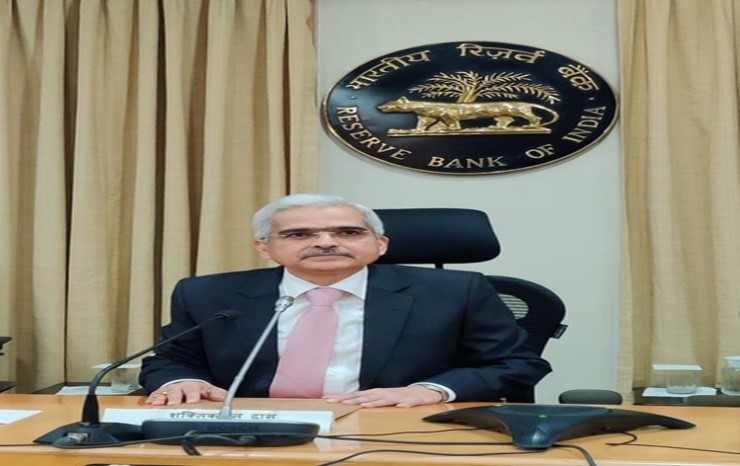
Details:
- Addressing an event in Mumbai to mark Digital Payments Awareness Week, RBI Governor Shaktikanta Das today said that the necessary approvals have been given to NPCI Bharat BillPay Limited, adding that the system will facilitate quicker settlement of funds for merchants.
About Interoperable Payment System for Internet Banking:
- The Reserve Bank of India (RBI) is working on launching an interoperable payment system for internet banking transactions in India. This system, expected to be operational in 2024, aims to address challenges associated with current online payments and improve the overall experience for both consumers and merchants.
Implementation:
- The RBI has authorized NPCI Bharat BillPay Ltd. (NBBL) to implement the interoperable system. NBBL already operates the Bharat Bill Payment System, which allows for online bill payments across various categories.
Benefits of the Interoperable System
- Convenience for Consumers: Customers will have greater flexibility in choosing their preferred bank for online payments, regardless of the merchant's payment gateway.
- Wider Reach for Merchants: Merchants can accept payments from a wider customer base without needing individual integrations with various banks.
- Faster Settlements: Transactions are expected to be settled more quickly, improving cash flow for merchants.
- Increased Efficiency: The system is expected to streamline online payment processes, reducing complexities for both consumers and merchants.
- Enhanced Security: The RBI will ensure the system adheres to robust security standards, potentially reducing online payment fraud.






![]()
![]()




